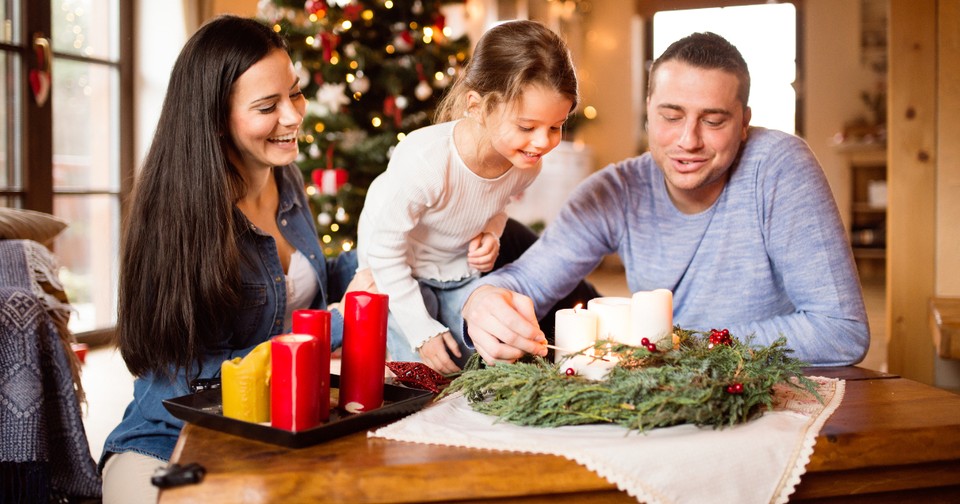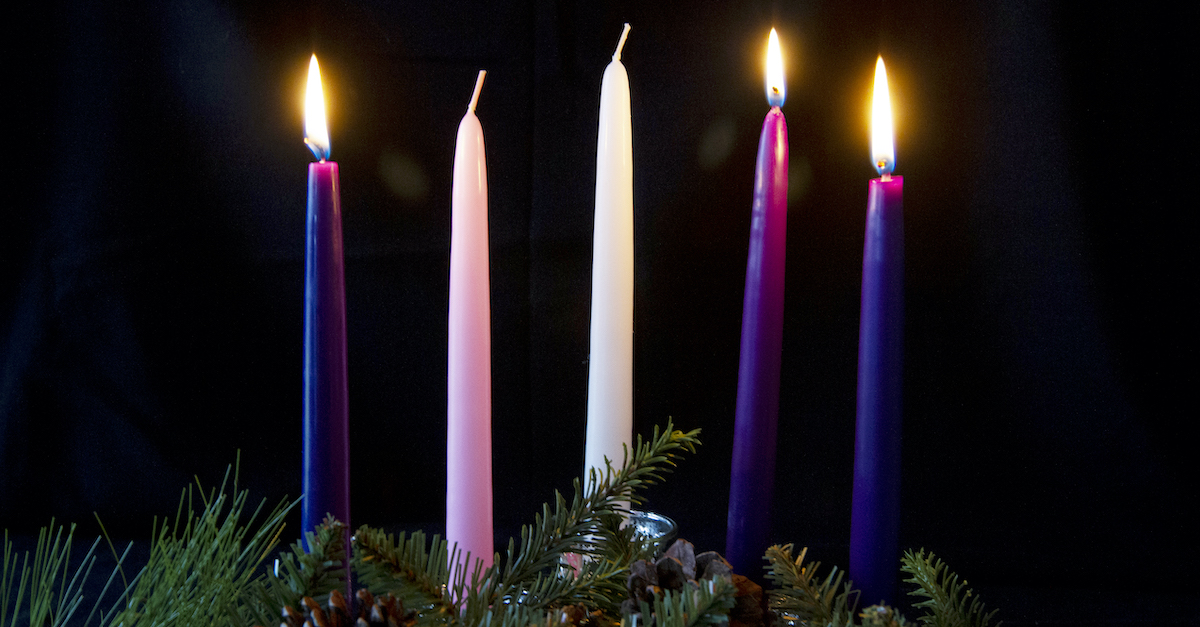What is an Advent Wreath? How-to Guide for Celebrating Advent

As the Christmas season approaches, you may have noticed the appearance of Advent wreaths in homes and churches. These beautiful and symbolic decorations play an essential role in the Christian tradition of preparing for the Birth of Jesus. In this comprehensive guide, we will explore the purpose of the Advent wreath, the symbolism behind its components, its history, and how to celebrate the meaning of Christmas with this beloved tradition.
Advent Meaning
The Advent wreath serves as a visual and symbolic countdown to Christmas. It is a way for Christians to mark the four weeks leading up to the birth of Jesus. The term "Advent" is derived from the Latin word "adventus," meaning "coming" or "arrival." Therefore, the Advent wreath represents the anticipation of the arrival of Jesus, not only as a historical event but also as a spiritual presence in the lives of believers.
Key Purposes of the Advent Wreath:
Counting Down to Christmas: The Advent wreath helps believers track the weeks and days leading up to Christmas, emphasizing the sense of anticipation and hope.
Spiritual Preparation: Lighting the candles and reading scripture during Advent encourages reflection, repentance, and spiritual preparation for the celebration of Christ's birth.
Symbol of Light: The Advent candles symbolize the Light of Christ coming into the world, dispelling the captivity of darkness and sin.
Fellowship and Family Tradition: Lighting the Advent candles can be a communal and family practice, providing a special time for prayer and togetherness during the holiday season.
How to Celebrate Advent with a Wreath
Obtain an Advent Wreath: You can purchase a ready-made Advent wreath or create one using an evergreen wreath, candles (usually three purple and one pink), and a white Christ candle.
Place the Wreath: Find a central location, such as a dining table or a prominent spot in your home, to display the Advent wreath.
Light the Candles: Begin lighting the candles on the appropriate Sundays of Advent. Start with the Prophecy Candle, followed by the Bethlehem Candle, the Shepherds Candle, and finally, the Angel Candle. Then, on Christmas Day, light the candle for Christ Himself.
Read Scripture: As you light each candle, read the corresponding scripture for each week of Advent and reflect on its meaning. Here is a collection of Advent Bible verses to use for your Advent readings as well.
Prayer and Reflection: Take a moment for prayer and personal reflection, focusing on the candle's theme and how it relates to your faith journey. Use this compilation of Advent Prayers to pray for each candle lighting.
Gather as a Family: If you have family members, consider making this a communal practice, allowing each member to take turns lighting the candles and reading the scriptures.
Discuss the Symbolism: Engage in discussions about the symbolism of the wreath and candles, helping children and newcomers to the tradition understand its significance.
Christmas Day: On Christmas Day, light the Christ candle to celebrate the birth of Jesus and read the corresponding scripture.
Symbolism of the Advent Wreath and Candles
The Advent wreath consists of various elements, each with its unique symbolism. Understanding these symbols adds depth to the meaning of the tradition.

The Wreath
Circular Shape: The circular shape of the wreath represents eternity and the unending nature of God's love.
Evergreen Branches: Typically made from evergreen branches, the wreath symbolizes life and growth even during the winter months when most other plants wither.
Red Berries: Red berries, often holly berries, symbolize Christ's blood that was shed for humanity's salvation.

The Candles
The Advent wreath typically has four candles, and each candle represents a different aspect of the Advent season. The central candle, often called the "Christ candle," is white and is lit on Christmas Day. When lighting each candle, you can read the Bible passages below and sing these related Christmas hymns with your family.
The Prophecy Candle (Purple): The first purple candle represents hope and the prophets who foretold the coming of the Messiah. Related Christmas Hymn: "O Come, O Come Emmanuel"
The Bethlehem Candle (Purple): The second purple candle symbolizes faith and represents Mary and Joseph's journey to Bethlehem. Related Christmas Hymn: "Oh Little Town of Bethlehem."
The Shepherd Candle (Pink): The pink candle represents joy and the shepherds' joy upon hearing the good news of Jesus' birth. Related Christmas hymn: Related Christmas Hymn: "The First Noel"
The Angel Candle (Purple): The fourth purple candle symbolizes peace and the angels who heralded the birth of Christ. Related Christmas Hymn: "Hark! The Herald Angels Sing"
The Christ Candle
The central white candle, often placed in the middle of the wreath, is the "Christ candle." It is lit on Christmas Day to represent the arrival of Jesus, the light of the world.
Bible Readings for Advent
The lighting of the Advent candles is often accompanied by scripture readings that reflect on the themes of each candle. The readings help believers connect with the biblical narratives that lead to the birth of Jesus.
Week 1 - The Prophecy Candle (Hope)
Scripture: Isaiah 9:2, Is. 9:6-7 - "The people walking in darkness have seen a great light; on those living in the land of deep darkness a light has dawned...For to us a child is born, to us a son is given, and the government will be on his shoulders. And he will be called Wonderful Counselor, Mighty God, Everlasting Father, Prince of Peace. Of the greatness of his government and peace there will be no end. He will reign on David’s throne and over his kingdom, establishing and upholding it with justice and righteousness from that time on and forever. The zeal of the LORD Almighty will accomplish this."
Reflection: This reading highlights the prophecy of the Messiah's coming, bringing hope to a world in darkness.
Week 2 - The Bethlehem Candle (Peace)
Scripture: Micah 5:2, Luke 2:1-7 - “But you, Bethlehem Ephrathah, though you are small among the clans of Judah, out of you will come for me one who will be ruler over Israel, whose origins are from of old, from ancient times.”..."In those days Caesar Augustus issued a decree that a census should be taken of the entire Roman world. (This was the first census that took place while Quirinius was governor of Syria.) And everyone went to their own town to register. So Joseph also went up from the town of Nazareth in Galilee to Judea, to Bethlehem the town of David, because he belonged to the house and line of David. He went there to register with Mary, who was pledged to be married to him and was expecting a child. While they were there, the time came for the baby to be born, and she gave birth to her firstborn, a son. She wrapped him in cloths and placed him in a manger, because there was no guest room available for them."
Reflection: The reading focuses on the journey to Bethlehem and the faith of Mary and Joseph as they fulfill the prophecy.
Week 3 - The Shepherds Candle (Joy)
Scripture: Luke 2:8-14 - "And there were shepherds living out in the fields nearby, keeping watch over their flocks at night. An angel of the Lord appeared to them, and the glory of the Lord shone around them, and they were terrified. But the angel said to them, “Do not be afraid. I bring you good news that will cause great joy for all the people. Today in the town of David a Savior has been born to you; he is the Messiah, the Lord. This will be a sign to you: You will find a baby wrapped in cloths and lying in a manger.” Suddenly a great company of the heavenly host appeared with the angel, praising God and saying, “Glory to God in the highest heaven, and on earth peace to those on whom his favor rests.” When the angels had left them and gone into heaven, the shepherds said to one another, “Let’s go to Bethlehem and see this thing that has happened, which the Lord has told us about.”
Reflection: This reading tells the story of the shepherds who received the joyful news of Christ's birth from the angels.
Week 4 - The Angel Candle (Love)
Scripture: Luke 2:15-20 - "When the angels had left them and gone into heaven, the shepherds said to one another, “Let’s go to Bethlehem and see this thing that has happened, which the Lord has told us about.” So they hurried off and found Mary and Joseph, and the baby, who was lying in the manger. When they had seen him, they spread the word concerning what had been told them about this child, and all who heard it were amazed at what the shepherds said to them. But Mary treasured up all these things and pondered them in her heart. The shepherds returned, glorifying and praising God for all the things they had heard and seen, which were just as they had been told."
Reflection: The reading emphasizes the message of peace brought by the angels as they announced the birth of the Savior.
Christmas Day - The Christ Candle
Scripture: John 1:1-14 - "In the beginning was the Word, and the Word was with God, and the Word was God. He was with God in the beginning. Through him all things were made; without him nothing was made that has been made. In him was life, and that life was the light of all mankind. The light shines in the darkness, and the darkness has not overcome it. There was a man sent from God whose name was John. He came as a witness to testify concerning that light, so that through him all might believe. He himself was not the light; he came only as a witness to the light. The true light that gives light to everyone was coming into the world. He was in the world, and though the world was made through him, the world did not recognize him. He came to that which was his own, but his own did not receive him. Yet to all who did receive him, to those who believed in his name, he gave the right to become children of God— children born not of natural descent, nor of human decision or a husband’s will, but born of God. The Word became flesh and made his dwelling among us. We have seen his glory, the glory of the one and only Son, who came from the Father, full of grace and truth."
Reflection: This reading celebrates the Incarnation, as the Word became flesh and dwelt among us, demonstrating God's love for humanity.
History of the Advent Wreath
The history of the Advent wreath can be traced back to the Middle Ages in Germany, where the tradition of lighting candles during Advent was a common practice. The concept of the Advent wreath, as we know it today, likely evolved from these early customs. It was initially a simple wooden wheel with small candles, which eventually transformed into the elaborate wreaths we see today.
The Advent wreath's use spread to other parts of Europe and eventually to the United States, becoming a popular tradition in many Christian denominations. Today, it is celebrated by Catholics, Protestants, and Orthodox Christians alike.
In conclusion, the Advent wreath is a powerful Christian tradition that offers a meaningful way to prepare for and celebrate the birth of Jesus. Its symbolism, history, and scriptural connections provide depth to the holiday season, reminding believers of the true reason for the season. Whether you are celebrating as a family, a church community, or individually, the Advent wreath can be a beautiful and spiritually enriching addition to your Christmas festivities, fostering a sense of hope, faith, joy, and peace as you count down to the celebration of Christ's birth.
Photo credit: Getty/Halfpoint; Getty/Margarita Khamidulina
This article is part of our larger Christmas and Advent resource library centered around the events leading up to the birth of Jesus Christ. We hope these articles help you understand the meaning and story behind important Christian holidays and dates and encourage you as you take time to reflect on all that God has done for us through His Son, Jesus Christ!
25 Hope-Filled Advent Bible Verses
Christmas Bible Verses to Share and Celebrate
The Birth of Jesus: Bible Story and Verses
Who Were the Wise Men?
Who Were the Christmas Angels?
Originally published November 24, 2023.





